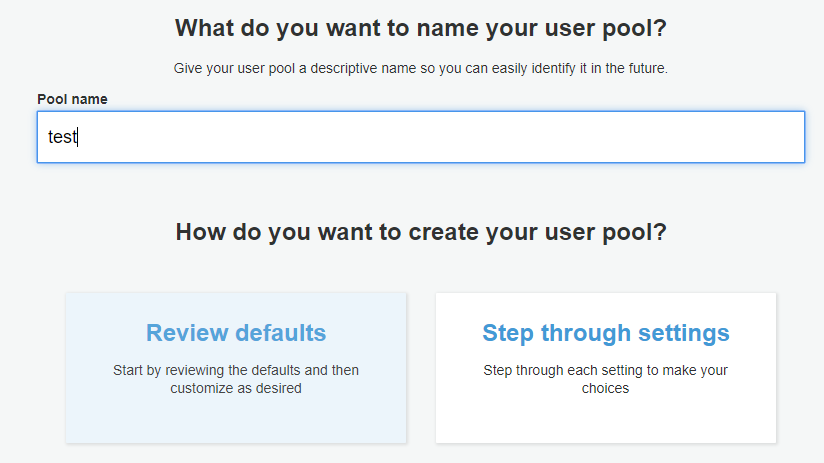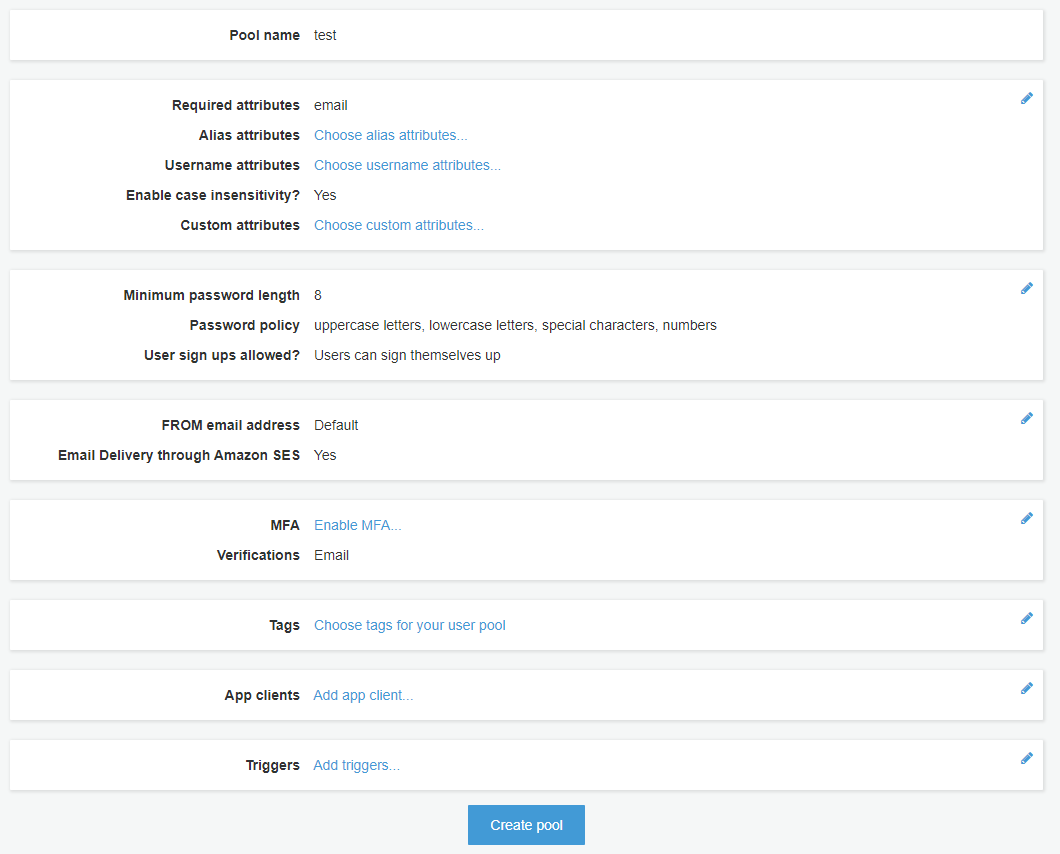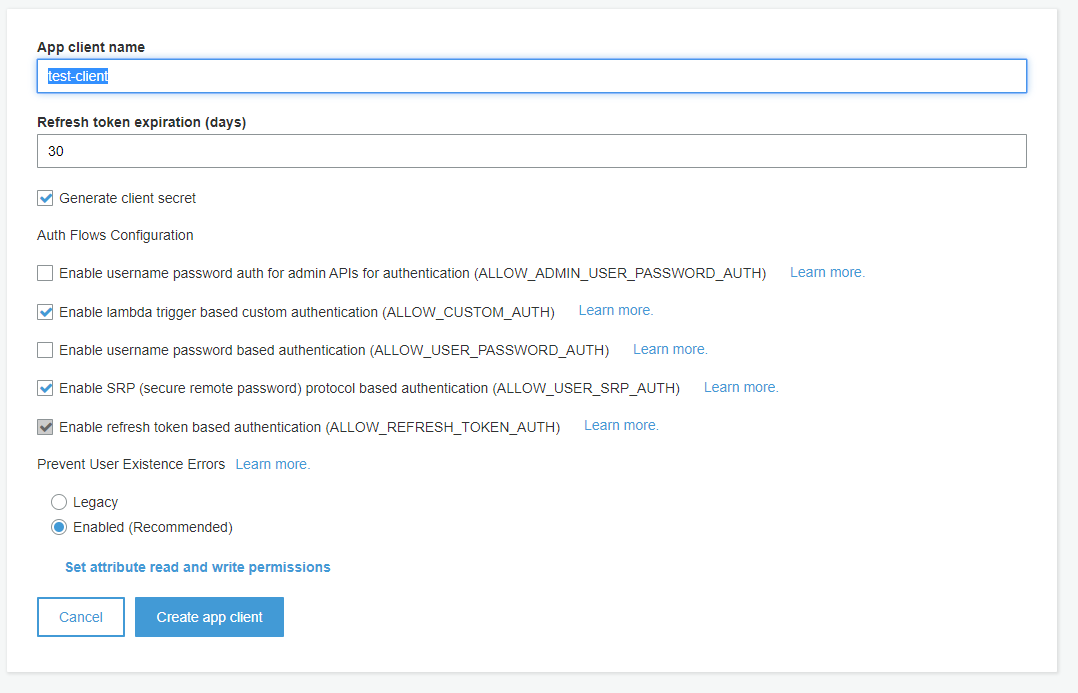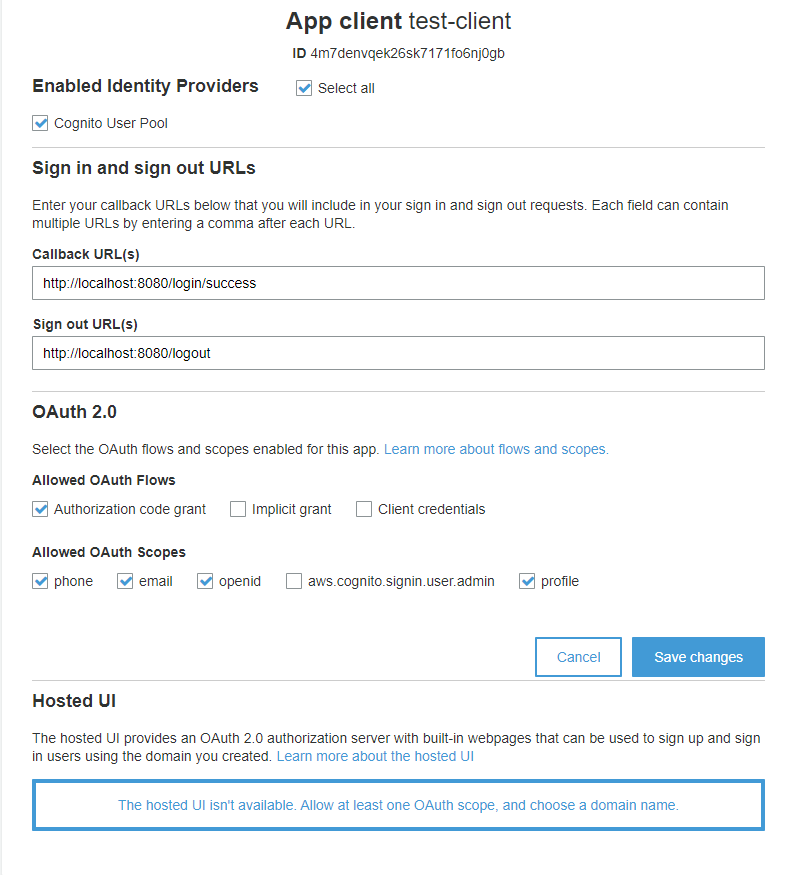# Getting started with AWS Cognito
Let's get started on AWS Cognito (opens new window).
Amazon Cognito lets you add user sign-up, sign-in, and access control to your web and mobile apps quickly and easily. Amazon Cognito scales to millions of users and supports sign-in with social identity providers, such as Facebook, Google, and Amazon, and enterprise identity providers via SAML 2.0.
A few features:
- Customizable ready-to-use login screens
- OpenId Connect, OAuth 2.0 and SAML 2.0 support
- Built-in support for Facebook, Google, Amazon and Apple login
- Add any SAML/OpenID Connect identity provider
- Multi-Factor authentication support
First 50,000 monthly active users are free.
# Setup Cognito
To setup cognito, we need to navigate login to the AWS management console and create a new user pool.

# Create user pool
For ease of setup, we'll go with the defaults.

# Create groups
After creating the pool, navigate to users/groups.
Let's create two groups. "admin" and "user".
# Create user
We'll also create a user so we can test the login.
If you run into password constraint issues, you can change that now or later in the Policies tab.

# Assign group to user
Click on the user and assign the user to the "user" group.

# Creating app client
To be able to login or provide a login page, we still need to create an app client. Go to General Settings > App Clients and create a new client.

# Configure domain
To use the hosted UI, we need to setup a domain under App integration / Domain name.
Amazon provides a domain for us if we simply define a unique subdomain. You can use your own domain aswell.

# Configure an app client
App clients are disabled by default. We need to go to App integration > App client settings, enable the identity provider and define a callback url.
For Authorization flows you can either choose Authorization code grant and/or Implicit grant OR Client credentials. An app client cannot support client credentials and authorization code grant flow. You need separate clients.

You should now be able to launch the hosted UI.
We should be able to login with our recently created user and be redirected to http://redirect-url?code=... on successful login.